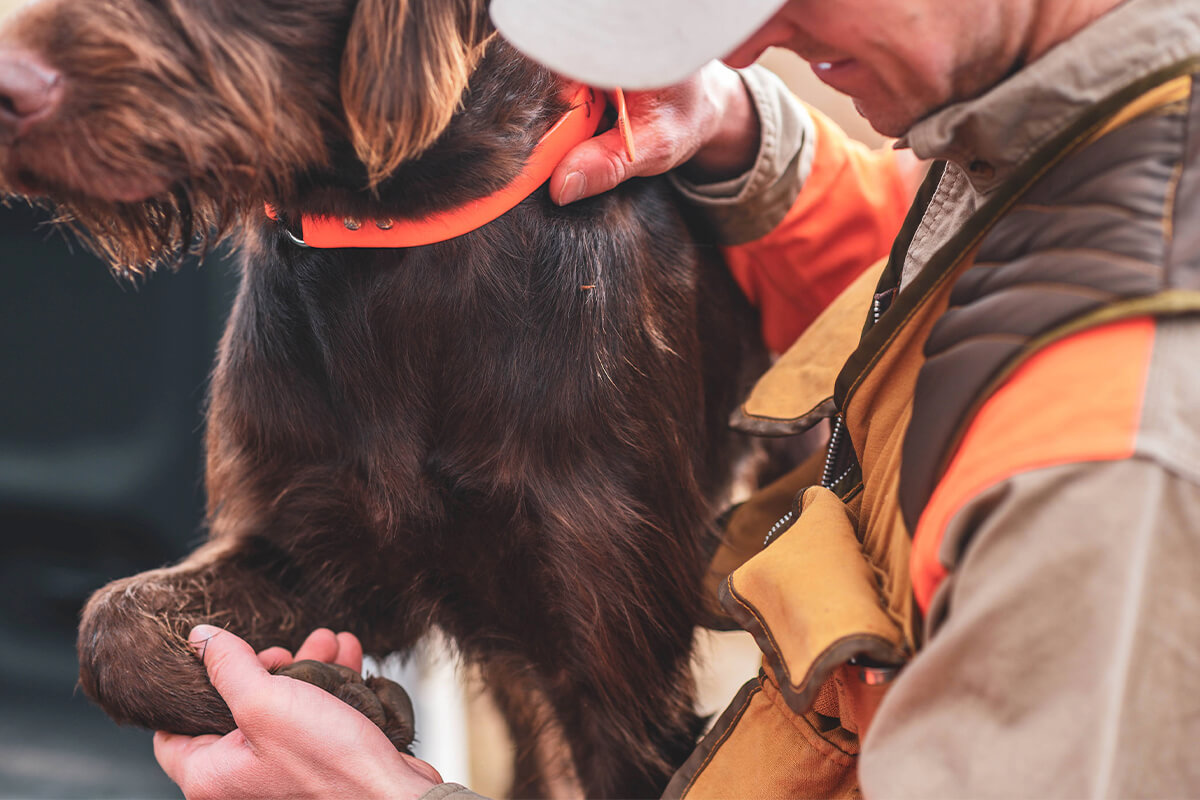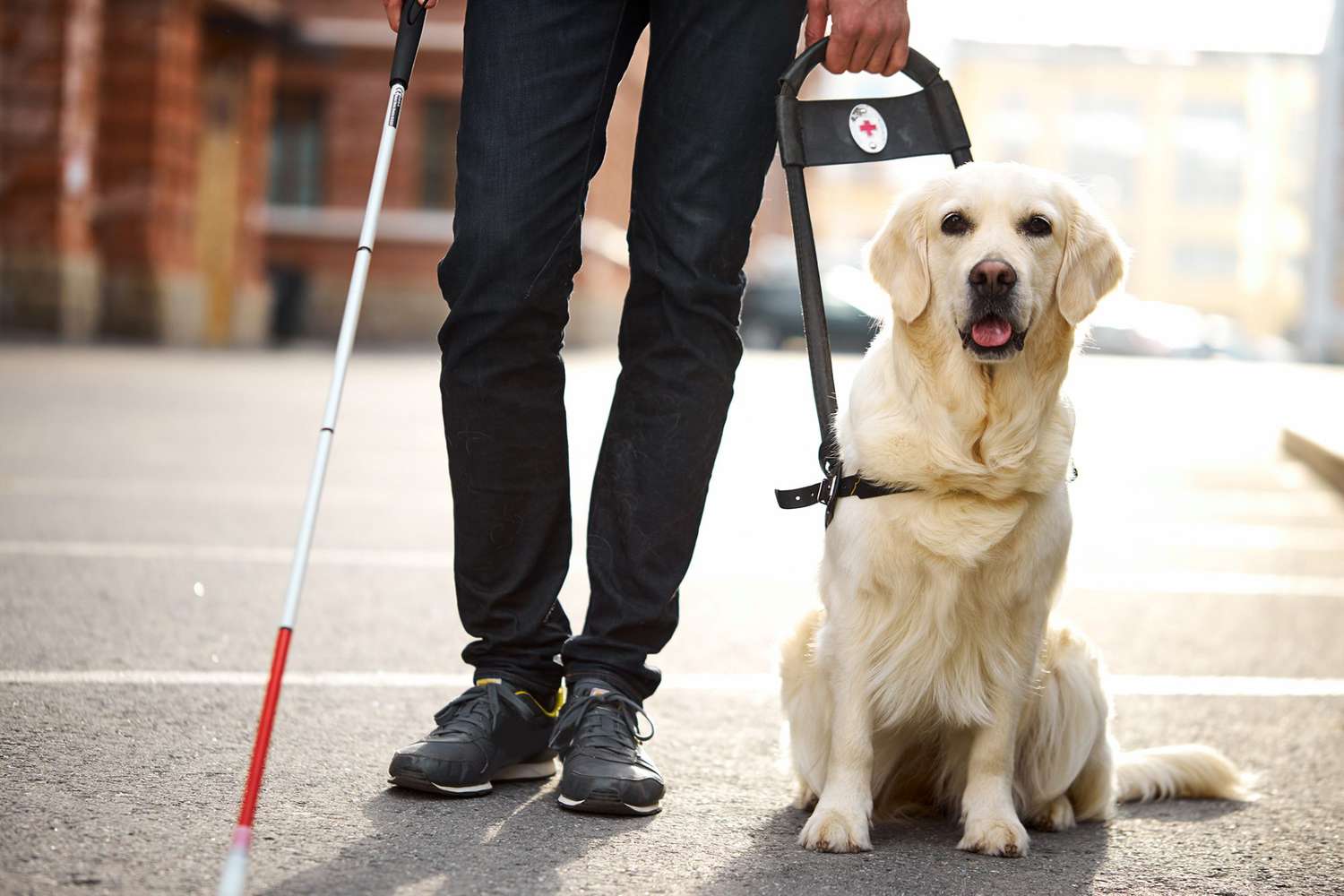Home>Health & Wellness>Common Health Issues>Muscular and Joint Health>How Fast Does Arthritis Progress In Dogs


Muscular and Joint Health
How Fast Does Arthritis Progress In Dogs
Modified: February 21, 2024
Learn about the progression of arthritis in dogs and how to support their muscular and joint health. Find tips to manage and slow down the progression.
(Many of the links in this article redirect to a specific reviewed product. Your purchase of these products through affiliate links helps to generate commission for Pawsomeoldies.com, at no extra cost. Learn more)
Table of Contents
Introduction
Arthritis is a common condition that affects not only humans but also our beloved canine companions. It is a degenerative joint disease that can cause pain, stiffness, and decreased mobility in dogs. As a pet owner, it's essential to understand the progression of arthritis in dogs, including the factors that influence its development, the signs and symptoms to watch out for, and the available treatment options.
Arthritis can significantly impact a dog's quality of life, making it crucial for pet owners to be proactive in managing the condition. By gaining insight into the progression of arthritis in dogs, you can take the necessary steps to provide your furry friend with the care and support they need to live a comfortable and fulfilling life.
Understanding the nuances of arthritis progression in dogs empowers pet owners to recognize the early signs of the condition and seek appropriate veterinary care. This article will delve into the various aspects of arthritis progression in dogs, shedding light on the factors influencing its development, the signs and symptoms indicative of progression, and the available treatment and management options. By delving into these crucial details, you will be better equipped to navigate the journey of supporting your canine companion through the challenges posed by arthritis.
Understanding Arthritis in Dogs
Arthritis, also known as osteoarthritis or degenerative joint disease, is a prevalent condition that affects dogs of all ages and breeds. It primarily impacts the joints, leading to pain, inflammation, and reduced mobility. The progression of arthritis in dogs is characterized by the gradual deterioration of joint cartilage, accompanied by changes in the surrounding bone and soft tissue.
The underlying causes of arthritis in dogs can vary, with factors such as genetics, aging, obesity, joint trauma, and developmental disorders contributing to its onset. Additionally, certain breeds are predisposed to specific types of arthritis, highlighting the genetic component of the condition. Large breeds, such as Labrador Retrievers and German Shepherds, are more susceptible to arthritis due to their size and weight, which places increased stress on their joints over time.
Understanding the pathophysiology of arthritis in dogs is essential for pet owners, as it enables them to recognize the early signs of the condition and seek timely veterinary intervention. The progressive nature of arthritis necessitates proactive management to alleviate discomfort and maintain the dog's overall well-being.
As arthritis advances, the affected joints may exhibit visible swelling, warmth, and reduced range of motion. Dogs may also display signs of discomfort, such as reluctance to engage in physical activities, limping, or difficulty rising from a lying position. These manifestations underscore the importance of vigilant observation and prompt veterinary assessment to address the evolving needs of dogs with arthritis.
By comprehending the intricacies of arthritis in dogs, pet owners can cultivate a proactive approach to their pet's joint health. This entails implementing preventive measures, such as maintaining a healthy weight, providing regular exercise, and offering joint-supportive nutrition. Furthermore, fostering an environment that minimizes joint stress and supports musculoskeletal health can significantly mitigate the impact of arthritis on a dog's daily life.
In essence, understanding arthritis in dogs encompasses a multifaceted awareness of its etiology, clinical manifestations, and the pivotal role of proactive management. By gaining insight into these fundamental aspects, pet owners can embark on a journey of compassionate and informed care, ensuring that their canine companions receive the support necessary to navigate the challenges posed by arthritis.
Factors Affecting the Progression of Arthritis
The progression of arthritis in dogs is influenced by a myriad of factors that collectively contribute to the development and exacerbation of the condition. Understanding these determinants is crucial for pet owners, as it empowers them to proactively address the underlying causes and mitigate the impact of arthritis on their canine companions. Several key factors play a pivotal role in shaping the trajectory of arthritis progression in dogs:
-
Genetics: Genetic predisposition can significantly influence the likelihood of a dog developing arthritis. Certain breeds are inherently more susceptible to specific types of arthritis due to genetic factors. For instance, hip dysplasia, a common form of arthritis in dogs, is prevalent in breeds such as Golden Retrievers, Bulldogs, and Pugs. By understanding the genetic predispositions of their canine companions, pet owners can take preemptive measures to support joint health and minimize the risk of arthritis progression.
-
Age and Developmental Disorders: Aging is a primary risk factor for the onset of arthritis in dogs. As dogs grow older, the wear and tear on their joints can lead to the gradual erosion of cartilage and the onset of degenerative joint disease. Additionally, developmental disorders, such as elbow dysplasia and osteochondritis dissecans, can predispose dogs to early-onset arthritis, underscoring the importance of early detection and intervention.
-
Obesity: Excess body weight places undue stress on a dog's joints, accelerating the degenerative processes associated with arthritis. Obesity is a significant risk factor for arthritis progression, as it not only exacerbates existing joint damage but also increases the likelihood of developing the condition. Maintaining a healthy weight through balanced nutrition and regular exercise is paramount in mitigating the impact of obesity on arthritis progression.
-
Joint Trauma and Overexertion: Traumatic injuries, such as fractures, ligament tears, and dislocations, can precipitate the development of arthritis in affected joints. Additionally, overexertion and repetitive stress on the joints, particularly in athletic or working dogs, can contribute to the progression of arthritis. Preventive measures, such as controlled exercise regimens and injury avoidance, are essential in minimizing the risk of joint trauma-induced arthritis.
-
Environmental Factors: Environmental influences, such as temperature extremes and damp conditions, can exacerbate the symptoms of arthritis in dogs. Cold weather, in particular, can intensify joint stiffness and discomfort, necessitating additional support and protection for arthritic dogs during inclement weather.
By comprehensively understanding the multifaceted factors affecting the progression of arthritis in dogs, pet owners can adopt a proactive approach to mitigating the impact of these determinants. Through diligent observation, preventive measures, and timely veterinary intervention, pet owners can effectively address the underlying causes of arthritis progression, thereby enhancing the quality of life for their canine companions.
Signs and Symptoms of Arthritis Progression
The progression of arthritis in dogs manifests through a spectrum of signs and symptoms that reflect the evolving impact of the condition on their musculoskeletal health. Recognizing these indicators is pivotal for pet owners, as it enables them to promptly address the evolving needs of their canine companions and seek appropriate veterinary care. The following are common signs and symptoms indicative of arthritis progression in dogs:
-
Lameness and Limping: Dogs experiencing arthritis progression often exhibit lameness or an altered gait, characterized by a noticeable limp or reluctance to bear weight on affected limbs. This manifestation stems from joint pain and stiffness, prompting dogs to modify their movement patterns to alleviate discomfort.
-
Stiffness and Reduced Mobility: Arthritic dogs may display stiffness, particularly after periods of rest or inactivity. This stiffness can impede their mobility, making it challenging for them to engage in physical activities such as climbing stairs, jumping, or running.
-
Reluctance to Exercise: Dogs with arthritis progression may demonstrate a reluctance to engage in physical exercise or play. This aversion to activity stems from the discomfort and pain associated with joint movement, prompting dogs to withdraw from activities they once enjoyed.
-
Muscle Atrophy: Progressive arthritis can lead to muscle atrophy in the affected limbs, as reduced mobility and joint pain deter dogs from utilizing these muscles effectively. As a result, the affected muscles may appear visibly smaller and weaker over time.
-
Joint Swelling and Heat: In advanced stages of arthritis progression, affected joints may exhibit swelling and warmth, indicative of inflammation and joint degeneration. Palpation of the joints may reveal tenderness and discomfort in response to pressure.
-
Behavioral Changes: Dogs experiencing arthritis progression may display changes in behavior, such as increased irritability, restlessness, or a preference for solitude. These behavioral shifts stem from the persistent discomfort and compromised mobility associated with arthritis.
-
Difficulty Rising and Lying Down: Arthritic dogs may struggle to rise from a lying position or experience difficulty lying down comfortably. This difficulty arises from joint pain and stiffness, making basic movements a source of discomfort for affected dogs.
-
Licking or Chewing at Joints: Dogs may exhibit compulsive licking or chewing at the affected joints in an attempt to alleviate discomfort. This behavior serves as a coping mechanism for the pain and inflammation associated with arthritis progression.
By attentively observing these signs and symptoms, pet owners can gain valuable insights into the progression of arthritis in their canine companions, enabling them to seek timely veterinary evaluation and implement appropriate management strategies. Understanding the nuanced manifestations of arthritis progression empowers pet owners to provide compassionate care and support, thereby enhancing the quality of life for their beloved dogs.
Diagnosing the Progression of Arthritis
Diagnosing the progression of arthritis in dogs requires a comprehensive approach that encompasses clinical evaluation, diagnostic imaging, and a thorough assessment of the dog's medical history. Veterinary professionals employ a combination of physical examinations and diagnostic tests to ascertain the extent of arthritis progression and formulate an effective treatment plan tailored to the individual needs of the dog.
During the physical examination, the veterinarian assesses the dog's gait, joint mobility, and overall musculoskeletal health. They palpate the affected joints to identify signs of swelling, tenderness, and warmth, indicative of inflammation and joint degeneration. Observing the dog's movement patterns and response to joint manipulation provides valuable insights into the severity of arthritis progression and the impact on the dog's daily functioning.
Diagnostic imaging plays a pivotal role in diagnosing the progression of arthritis, enabling veterinarians to visualize the structural changes within the affected joints. Radiographs (X-rays) are commonly employed to assess joint integrity, identify cartilage erosion, and detect bony abnormalities associated with arthritis. Additionally, advanced imaging modalities such as computed tomography (CT) scans and magnetic resonance imaging (MRI) may be utilized to obtain detailed cross-sectional images of the affected joints, facilitating a comprehensive evaluation of the extent of arthritis progression.
In conjunction with physical examinations and diagnostic imaging, the dog's medical history is meticulously reviewed to identify predisposing factors, previous joint injuries, and the onset of clinical signs indicative of arthritis progression. This holistic approach to diagnosis enables veterinarians to gain a nuanced understanding of the dog's musculoskeletal health, facilitating the formulation of a tailored management plan that addresses the specific needs and challenges posed by arthritis progression.
Furthermore, laboratory tests, such as joint fluid analysis, may be conducted to assess the inflammatory markers and cellular composition within the affected joints, providing valuable diagnostic insights into the progression of arthritis. These diagnostic modalities collectively contribute to a comprehensive assessment of arthritis progression, empowering veterinary professionals to devise a multifaceted treatment approach that encompasses pain management, joint support, and lifestyle modifications to enhance the dog's quality of life.
By leveraging a multidimensional diagnostic approach, veterinarians can accurately diagnose the progression of arthritis in dogs, laying the foundation for targeted interventions that mitigate discomfort, preserve joint function, and optimize the overall well-being of canine patients. This proactive diagnostic strategy underscores the commitment to compassionate care and informed management of arthritis progression, ensuring that dogs receive the support necessary to navigate the challenges posed by this debilitating condition.
Read more: What Does Arthritis Look Like In A Dog?
Treatment Options for Arthritis Progression
The management of arthritis progression in dogs encompasses a diverse array of treatment options aimed at alleviating pain, improving joint function, and enhancing the overall quality of life for canine patients. Veterinary professionals employ a multifaceted approach that integrates pharmacological interventions, lifestyle modifications, and supportive therapies to address the evolving needs of dogs with arthritis. The following treatment options are instrumental in mitigating the impact of arthritis progression and fostering optimal musculoskeletal health in affected dogs:
-
Pain Management: Nonsteroidal anti-inflammatory drugs (NSAIDs) are commonly prescribed to alleviate pain and reduce inflammation associated with arthritis progression. These medications help mitigate discomfort, enabling dogs to engage in daily activities with greater ease. Additionally, veterinary professionals may recommend analgesic medications to manage chronic pain and enhance the dog's overall comfort.
-
Joint Supplements: Nutraceuticals such as glucosamine, chondroitin, and omega-3 fatty acids play a pivotal role in supporting joint health and mitigating the progression of arthritis. These supplements promote cartilage integrity, reduce joint inflammation, and enhance joint lubrication, thereby contributing to improved mobility and reduced discomfort in arthritic dogs.
-
Physical Therapy: Rehabilitation and physical therapy regimens tailored to the individual needs of arthritic dogs can significantly enhance joint mobility, muscle strength, and overall physical function. Therapeutic exercises, hydrotherapy, and massage techniques are employed to alleviate stiffness, improve range of motion, and promote musculoskeletal wellness.
-
Weight Management: Maintaining a healthy body weight is paramount in managing arthritis progression, as excess weight exacerbates joint stress and inflammation. Veterinary professionals collaborate with pet owners to devise tailored nutrition and exercise plans that support weight management and minimize the impact of obesity on arthritic joints.
-
Lifestyle Modifications: Environmental adaptations, such as providing orthopedic bedding, ramps for accessing elevated surfaces, and non-slip flooring, create a supportive environment that minimizes joint stress and enhances the comfort of arthritic dogs. These modifications facilitate ease of movement and reduce the risk of joint injury.
-
Acupuncture and Laser Therapy: Complementary therapies, including acupuncture and low-level laser therapy, are utilized to alleviate pain, reduce inflammation, and promote tissue healing in arthritic dogs. These modalities offer non-invasive approaches to pain management and musculoskeletal support, complementing conventional treatment strategies.
-
Surgical Interventions: In advanced cases of arthritis progression, surgical interventions such as joint debridement, arthroplasty, or joint fusion may be considered to alleviate pain and restore joint function. These procedures are tailored to the specific needs of the dog and are aimed at addressing severe joint degeneration.
By integrating these comprehensive treatment options, veterinary professionals collaborate with pet owners to devise tailored management plans that address the unique challenges posed by arthritis progression in dogs. This proactive approach to treatment underscores the commitment to enhancing the well-being of arthritic dogs, ensuring that they receive the compassionate care and support necessary to navigate the complexities of this debilitating condition.
Managing Arthritis Progression in Dogs
Managing the progression of arthritis in dogs necessitates a holistic and proactive approach that encompasses diligent observation, tailored interventions, and unwavering support to enhance the quality of life for canine companions grappling with this debilitating condition. By embracing a multifaceted strategy that integrates preventive measures, lifestyle modifications, and collaborative veterinary care, pet owners can navigate the challenges posed by arthritis progression and empower their dogs to lead fulfilling and comfortable lives.
Preventive Measures and Environmental Adaptations
Proactive management of arthritis progression begins with preventive measures aimed at minimizing the risk factors associated with the condition. Maintaining a healthy weight through balanced nutrition and regular exercise is pivotal in mitigating the impact of obesity on joint health, thereby reducing the strain on arthritic joints. Additionally, providing joint-supportive nutrition enriched with glucosamine, chondroitin, and omega-3 fatty acids can bolster cartilage integrity and mitigate the progression of arthritis.
Environmental adaptations play a crucial role in creating a supportive living space for arthritic dogs. Implementing non-slip flooring, orthopedic bedding, and ramps for accessing elevated surfaces minimizes joint stress and enhances mobility, fostering a comfortable and accessible environment for dogs with arthritis.
Collaborative Veterinary Care and Monitoring
Regular veterinary consultations and proactive monitoring are essential components of managing arthritis progression in dogs. Collaborating closely with veterinary professionals enables pet owners to gain valuable insights into the evolving needs of their canine companions and devise tailored management plans that address the specific challenges posed by arthritis. Through comprehensive physical examinations, diagnostic imaging, and ongoing assessment, veterinarians can provide personalized care that optimizes the well-being of arthritic dogs.
Read more: Why Is My Senior Dog Breathing Fast?
Lifestyle Modifications and Supportive Therapies
Lifestyle modifications tailored to the individual needs of arthritic dogs play a pivotal role in enhancing their comfort and mobility. Engaging in low-impact exercise regimens, such as swimming and gentle walks, promotes joint flexibility and muscle strength while minimizing the risk of exacerbating joint discomfort. Furthermore, incorporating physical therapy techniques, such as therapeutic exercises and massage, can alleviate stiffness and enhance the overall physical function of arthritic dogs.
Pain Management and Complementary Therapies
Effective pain management is paramount in mitigating the impact of arthritis progression on canine patients. Veterinary professionals may prescribe nonsteroidal anti-inflammatory drugs (NSAIDs) and analgesic medications to alleviate pain and reduce inflammation, thereby enhancing the comfort of arthritic dogs. Complementary therapies, including acupuncture and low-level laser therapy, offer non-invasive approaches to pain management and musculoskeletal support, complementing conventional treatment strategies.
By embracing a comprehensive and compassionate approach to managing arthritis progression in dogs, pet owners can empower their canine companions to navigate the complexities of this condition with resilience and comfort. Through proactive interventions, collaborative veterinary care, and unwavering support, pet owners play a pivotal role in enhancing the well-being and quality of life for dogs grappling with arthritis progression.
Conclusion
In conclusion, the progression of arthritis in dogs is a multifaceted journey that demands proactive awareness, compassionate care, and collaborative intervention. Understanding the underlying factors influencing arthritis progression, recognizing the nuanced signs and symptoms indicative of its impact, and embracing a comprehensive approach to diagnosis, treatment, and management are pivotal in enhancing the well-being of canine companions grappling with this debilitating condition.
By delving into the intricacies of arthritis progression, pet owners gain valuable insights into the evolving needs of their dogs, enabling them to navigate the challenges posed by this degenerative joint disease with empathy and informed awareness. The proactive implementation of preventive measures, lifestyle modifications, and supportive therapies fosters an environment that minimizes joint stress, enhances mobility, and promotes the overall comfort of arthritic dogs.
Collaborative veterinary care, encompassing regular consultations, diagnostic assessments, and tailored treatment plans, forms the cornerstone of managing arthritis progression. Through close collaboration with veterinary professionals, pet owners can devise personalized management strategies that address the specific challenges posed by arthritis, ensuring that their canine companions receive the compassionate care and support necessary to navigate this complex condition.
Furthermore, the integration of pain management strategies, joint-supportive nutrition, and complementary therapies empowers pet owners to optimize the quality of life for arthritic dogs, mitigating discomfort and enhancing their overall well-being. By embracing a holistic and proactive approach to managing arthritis progression, pet owners play a pivotal role in fostering resilience, comfort, and vitality in their canine companions, enabling them to lead fulfilling lives despite the challenges posed by this degenerative joint disease.
In essence, the journey of supporting dogs through the progression of arthritis is characterized by unwavering dedication, informed awareness, and a commitment to compassionate care. By embracing these principles, pet owners can empower their beloved canine companions to navigate the complexities of arthritis with resilience, comfort, and unwavering support, ensuring that they thrive despite the challenges posed by this debilitating condition.













